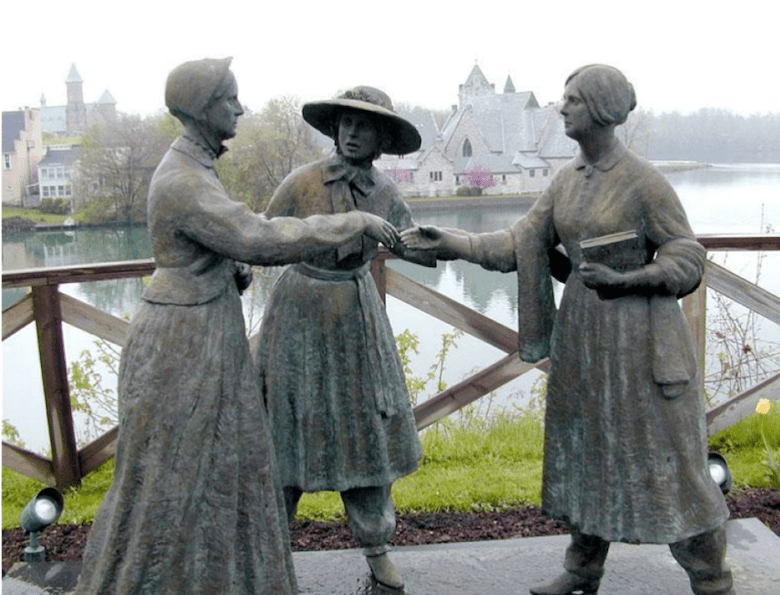Preparing for Annual Convention Days
Written by: Maria Smith
Hi everyone!
These past two weeks I have been assisting with preparation for the 2021 Convention Days programing. Convention Days is annual celebration of the 1848 Seneca Falls Women’s Rights Convention. This year Convention Days are to be celebrated virtually July 16-18, 2021 (Link for details). In this blog, I will expand on the 1848 Convention, how I have helped to prepare for the Virtual Convention Days, and a story on another fun story about an influential woman in Central New York. Today, I will talk about a clothing garment named after a Central New York woman- the bloomer dress.
The 1848 Seneca Falls Women’s Rights Convention was a catalyst for the Women’s Rights Movement within the United States; however, it came about because of an afternoon tea. Lucretia Mott was in Central New York visiting her sister Martha Coffin Wright. Wright took Mott to tea at her friend Jane Hunt’s home in Waterloo, NY. Hunt had invited Mary Ann M’Clintock and Elizabeth Cady Stanton to join her and the sisters for tea. The five women were discussing the inequalities that women faced. As family lore goes, Jane Hunt’s husband, Richard Hunt, encouraged the five women to challenge the inequalities. There, at the Hunt home, the women planned a Convention. They placed advertisements in local newspapers to spread the word of their Convention. 300 people attended the two-day Convention held at the Wesleyan Chapel in Seneca Falls. In the end, the Declaration of Sentiments, which outlined how women were treated unequally and the steps to correct it, was ratified. To learn more about the 1848 Seneca Falls Women’s Rights Convention visit here.

To celebrate Convention Days, the Women’s Rights NHP generally hosts guest speakers, historical interpreters, and more. Due to continued concerns with COVID-19, the 2021 Convention Days is virtual. This means that all talks will be available via YouTube and Facebook. To ensure that all visitors of virtual Convention Days can access the videos, I have edited some of the .srt files. These files provide the closed captioning for the Deaf and hearing-impaired community. All of the talks that I have listened to while preparing the .srt files are fantastic! I am most excited for the program “Someone Must Wash The Dishes: An Anti-Suffrage Satire” performed by Michèle LaRue: AEA, SAG-AFTRA. The satire was written in 1913 and mocks early 20th Century arguments against women’s suffrage.

Fashion has been deeply connected to the Women’s Rights Movement. In the mid-19th century, women began to push back against the societal expectations to wear dresses. Many found long dresses added an extra challenge to complete domestic activities or to work in the garden. Activist Amelia Bloomer popularized the bloomer dress, an ankle pant with a skirt reaching four inches below the knee. At the time mainstream women’s fashion included corsets and hoop skirts. The bloomer dress was a radical weapon in the fight for women’s equality because it allowed women to move more freely. Critics attacked the garment in articles, cartoons, songs, and plays as a symbol of deviance. Inspired by her neighbor’s fashion decisions, Elizabeth Cady Stanton wore the bloomer dress. Elizabeth Cady Stanton faced intense backlash from the public and her own family when she wore the bloomer dress. Her husband Henry, a New York state senator, faced backlash from voters who viewed the bloomer dress as deviant and suggestive of bad morals. Elizabeth Cady Stanton stopped wearing the bloomer dress because of the backlash she faced.
Image Citations: Bloomer, Stanton, Anthongy Statue
